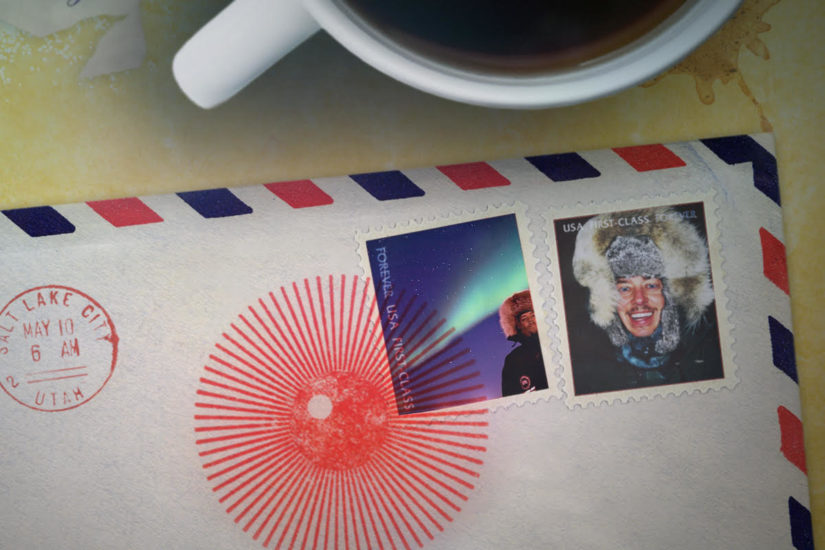FAMOUS TO ME celebrates the notable residents of the internet: charming characters, dedicated professionals, the headstrong, the bold, our true gems. Some of our readers may be unfamiliar with these local personalities, but those of us with the good fortune of knowing them from around town know they deserve recognition for their work, warmth and integrity. If you’d like to nominate someone for this honor, please mail it in. This week’s star: Wes Larson, in captions.
Yesterday a friend and I were trying our best to approximate our “work voices” for each other. We’ve never seen each other work work; we’ve read each other’s writings, or seen each other perform in public places, but we meant that voice we put on when we’re reassuring a colleague or boss that we’re responsible, trustworthy, competent. For me, this means a tone that sounds, in my head, a lot like the voice I used when I was a salesperson greeting customers, or the voice I used when I was a receptionist answering phones. It has a different pitch, but it also has different intentions, which are best described as buy what I’m selling, please. I find it politely pleading and unattractive.
Some people like their work voices or don’t consider them very different than their normal voices. My friend insisted his voice was no different at work than it was off the clock, but when I asked him to demonstrate, I found even his recreated approximation was deeper, more authoritative, than the voice I hear during our other conversations. It’s just the difference between what and how that I’m hearing: what we say at work is not as important as how we say it.
When I’m working now I’m usually silent, at home, and I let myself get distracted by scrolling through the Instagram accounts of other friends and fellow workers doing the same. Many of these accounts are for real businesses. I like to follow makeup artists, manicurists, pop stars and retail stores — accounts run with the sole purpose of showing off, or suggesting I purchase some item or idea. The rest of my feed are friends, who post only slightly different kinds of photos: some businesses seem to lead pretty fun lives, and some friends are pretty persuasive salespeople.
Recently I’ve become attached to a stranger named Wes Larson, a bear researcher in the process of getting his Master’s degree in wildlife conservation. He goes by @grizkid on Instagram and his captions from his different posts — currently studying polar bears in the Arctic, he’s based in Salt Lake City and normally works with black bears — are a tone of voice I recognize, even if I’ll never hear it myself. He’s a highly trained scientist with a skill and practice completely removed from the kind of work I do, but he’s also in his mid-to-late twenties, a white guy with a penchant for printed T-shirts and sunglasses, posting photos of an lizard he found with the caption “met this super chill lizard on Tinder, it’s going well” and posing in his Halloween costume (Milhouse Van Houten). He speaks at elementary schools about his work, bringing polar bear skulls for little kids to play with. In one photo his head is popping out of a hole in the deepest snow bank I’ve ever seen which he captions, simply, “SCIENCE!” I can tell what the intonation is supposed to be, how I’m supposed to hear that “SCIENCE!” in my head. It’s cute. I faved.
Larson’s work seems to involve trapping bears, posing for photos with them, and then reassuring his 55,000 followers that the bears are only temporarily incapacitated. In one photo, a bear is slumped over his lap, paws dangling over his knees: “Put some honey in the traps. That did the trick,” he writes. “For all you animal lovers, he’s sleeping, not dead btw.” On his birthday he posted a photo of him hoisting a subdued bear by the shoulders with a sweet message about everything he’s grateful for in the past year. “P.S. this is a drugged bear, not a dead one,” he reminds his followers. “For those of you who haven’t figured it out yet.” There’s one photo of his arms scratched by setting traps, joking that “bear science-ing isn’t easy.”
People who run with bears have their own clichés — there’s Werner Herzog’s Grizzly Man, about Timothy Treadwell, a bear enthusiast who was ultimately killed by the bears he claimed to be protecting. Further out in the cultural landscape we have Marian Engel’s Bear, about a woman who spends a hot Canadian summer working as an archivist and incidentally fucks a bear that lives in her backyard. Somewhere in the middle are cartoon bears who are lazy, or only motivated by honey, or cuddly, or terrifying. Following Larson has the effect of confirming a lot of these clichés (bears do kind of love honey!) but it is mostly a gentle sales pitch, imploring his followers to think of his work as an extension of who he is as a person, like he puts in his Instagram bio: “Wes, bear scientist, polar and black.” I sometimes want to know what his voice sounds like when he sets those traps and what it sounds like later, when he’s showing his friends the scratches on his arms, but his Instagram photos are that place in between, where what he does and who he is are one and the same, and something to be shared.
